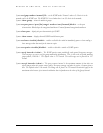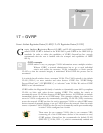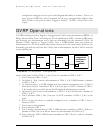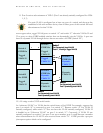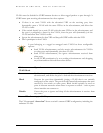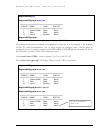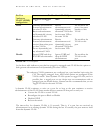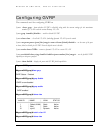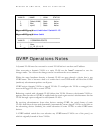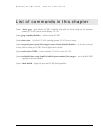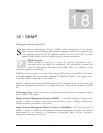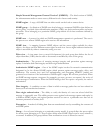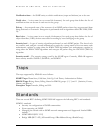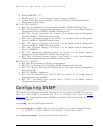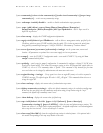
MAGNUM 6K SWITCHES, MNS-6K USER GUIDE
============================================
VLAN ID | NAME | VLAN STATUS
============================================
1 | Default VLAN | Static Active
2 | Blue | Static Active
10 | dyn10 | Static Active
Magnum6K25(gvrp)## set-forbid vlan=2 forbid=11-15
Magnum6K25(gvrp)## show-forbid
============================================
VLAN ID | FORBIDDEN PORTS
============================================
1 | None
2 | 11, 12, 13, 14, 15
FIGURE 127 – GVRP configuration example
GVRP Operations Notes
A dynamic VLAN must be converted to a static VLAN before it can have an IP address.
After converting a dynamic VLAN to a static VLAN use the “save” command to save the
changes made – on a reboot the changes can be lost without the save command.
Within the same broadcast domain, a dynamic VLAN can pass through a device that is not
GVRP-aware. This is because a hub or a switch that is not GVRP-aware will flood the GVRP
(multicast) advertisement packets out all ports.
GVRP assigns dynamic VLANs as tagged VLANs. To configure the VLAN as untagged, first
convert the tagged VLAN to a static VLAN.
Rebooting a switch with a dynamic VLAN deletes that VLAN. However, the dynamic VLAN re-
appears after the reboot if GVRP is enabled and the switch again receives advertisements for that
VLAN through a port configured to add dynamic VLANs.
By receiving advertisements from other devices running GVRP, the switch learns of static
VLANs from those devices and dynamically (automatically) creates tagged VLANs on the links to
the advertising devices. Similarly, the switch advertises its static VLANs to other GVRP-aware
devices.
A GVRP-enabled switch does not advertise any GVRP-learned VLANs out of the port(s) on
which it originally learned of those VLANs.
216



